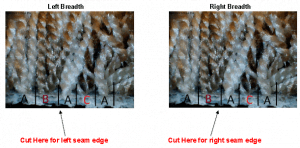Allergens and Energy - Shaw Educates
There are many myths surrounding carpet regarding allergies and indoor air quality. In response, Shaw Industries, the world’s largest carpet manufacturer, has introduced an educational and attention-grabbing marketing platform including messages via web, in-store and public relations outreach dedicated to informing the consumer regarding the benefits of carpet. In addition to stylish in-store POP kits, Shaw has developed landing pages from the company’s consumer web site in order to provide more in-depth information: shawfloors.com/saveenergy and shawfloors.com/allergens.
 Shaw is dedicated to communicating the facts about the benefits of carpet concerning health, indoor air quality and, most of all, energy savings. Aside from style and value, carpet offers the consumer many other benefits. The POP kit busts carpet myths surrounding allergens and indoor air quality while also promoting carpet benefits with tag lines such as “Carpet can help you breathe easier” and “No other flooring warms and insulates a room like carpet”.
Shaw is dedicated to communicating the facts about the benefits of carpet concerning health, indoor air quality and, most of all, energy savings. Aside from style and value, carpet offers the consumer many other benefits. The POP kit busts carpet myths surrounding allergens and indoor air quality while also promoting carpet benefits with tag lines such as “Carpet can help you breathe easier” and “No other flooring warms and insulates a room like carpet”.
Additionally, Shaw distributed a national news article with a powerful message disproving carpet myths via NewsUSA. To date, the information has been published in 164 local newspapers nationwide.
“It is important to educate consumers on the many benefits of carpet while dispelling common myths associated with the category. Shaw is dedicated to providing the consumer with the facts,” said Reggie Newton, Shaw’s vice president of residential marketing. “Plus, carpet offers the consumer great design flexibility, superior performance and an incredible value. It’s important for the consumer to understand that carpet is a safe, healthy and smart decision for her home and, ultimately, her family.”
Carpet is not often considered a “healthy” product, and some of the fault lies in the persistent myth that it contributes to poor indoor air quality. The truth is quite the contrary. An often overlooked advantage of carpet is its ability to improve a home’s environment. Scientists and researchers have concluded that carpet fibers can be beneficial in trapping and immobilizing potential allergy-causing particulates, preventing them from reentering the indoor air stream, if the carpet is properly cleaned and maintained. Not only is carpet one of the lowest emitters of volatile organic compounds (VOCs) among household furnishing and building materials, but its quality of filtering particulate matter can also assist in removing airborne VOCs emitted from other sources.
The use of carpet in a wall-to-wall application actually increases the R-value, or insulation level, of the carpet area, potentially saving homeowners utility costs while reducing energy use. The R-value (thermal resistance) measures how much a material resists the movement of heat through a ceiling, wall or floor in a building–the higher the number, the more effective the insulation.
Recently, tests carried out at the Johns Manville Technical Center Thermal Labs, one of the most sophisticated laboratories of its kind in the world, confirm carpet and pad significantly increase R-value compared to other flooring materials. Results varied according to the carpet’s construction, with heavier products generally providing higher R-value. Carpets were tested with and without cushion, and the combination maximized the R-value. Carpet really is warmer.
The Carpet and Rug Institute (CRI) is also working on educating consumers and retailers on this important topic. “The carpet industry has always worked to protect the air we breathe indoors,” says CRI president Werner Braun. “CRI is extremely interested in recent research from toxicologist Mitchell Sauerhoff, PhD., DABT, that concludes carpet does not increase the incidence of asthma or allergies in children or adults. CRI enthusiastically supports Shaw’s efforts to demonstrate to consumers the exceptional benefits of carpet in their homes – it’s a safe, healthy, beautiful, comfortable, and cost-effective floor covering.”
For more information, visit shawfloors.com.